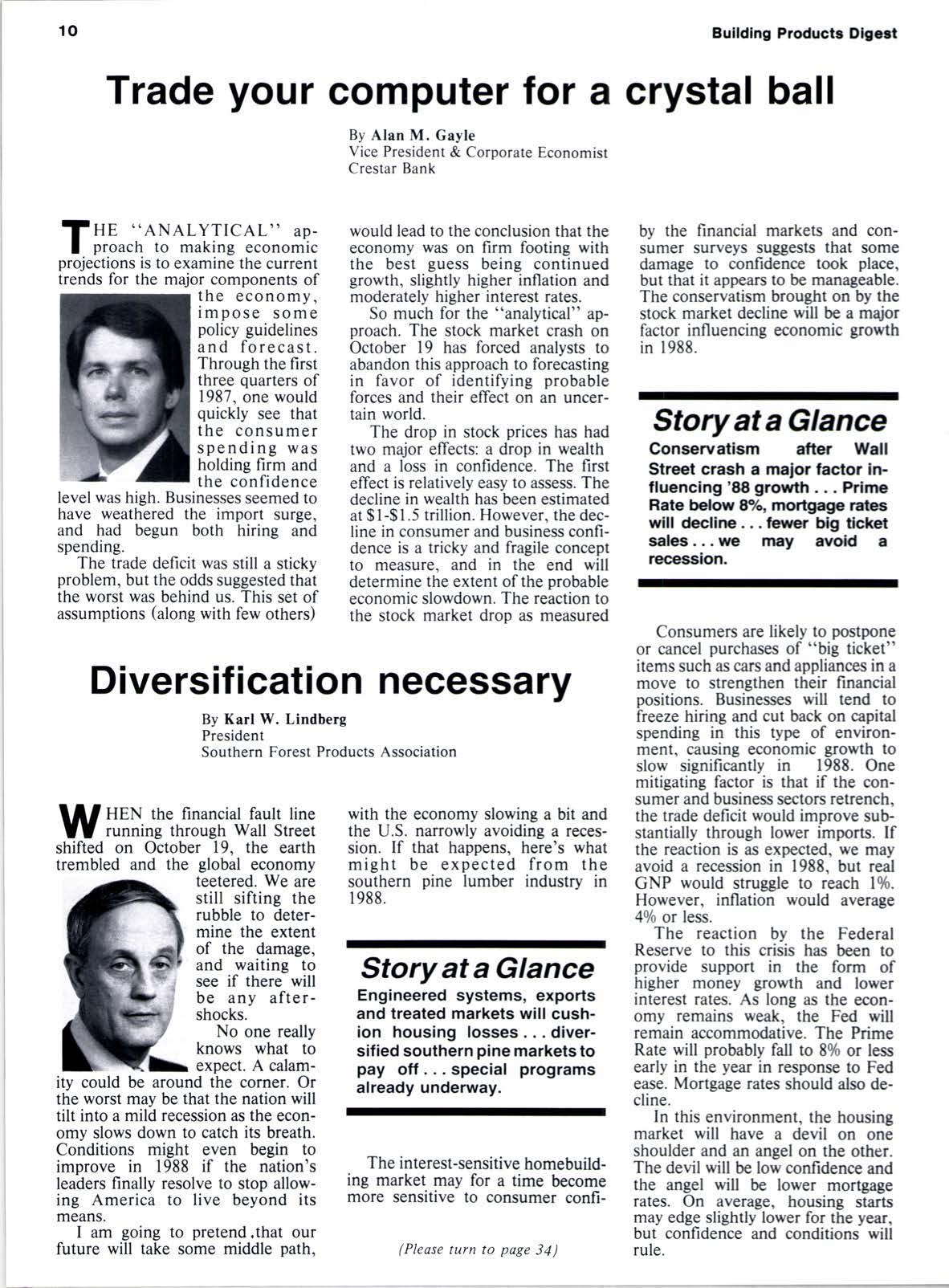
2 minute read
Diversification necessary
By Karl W. Lindberg President Southern Forest Products Association
ll, HEN the financial fault line
UU running through Wall Street shifted on October 19, the earth trembled and the global economy teetered. We are still sifting the rubble to determine the extent of the damage, and waiting to see if there will be any aftershocks.
No one really knows what to -trl4(L expect. A calamity could be around the corner. Or the worst may be that the nation will tilt into a mild recession as the economy slows down to catch its breath. Conditions might even begin to improve in 1988 if the nation's leaders finally resolve to stop allowing America to live beyond its means.
I am going to pretend.that our future will take some middle path, with the economy slowing a bit and the U.S. narrowly avoiding a recession. If that happens, here's what might be expected from the southern pine lumber industry in 1988.
Story at a Glance
Engineered systems, exports and treated markets will cushion housing losses.. diversified southern pine marketsto pay off ...special programs already underway.
by the financial markets and consumer surveys suggests that some damage to confidence took place, but that it appears to be manageable. The conservatism brought on by the stock market decline will be a mqior factor influencing economic growth in 1988.
Story at a Glance
Conservatism after Wall Street crash a major iactor Influencing'88 growtlr Prlme Rate belour 896, mortgagp rabs will decline. feur€r Ug dcl<et sales... we may avold a rgoession.
Consumers are likely to postpone or cancel purchases of "big ticket" items such as cars and appliances in a move to strengthen their financial positions. Businesses will tend to freeze hiring and cut back on capital spending in this type of environment, causing economic growth to slow significantly in 1988. One mitigating factor is that if the oonsumer and business sectors retrench. the trade deficit would improve substantially through lower imports. lf the reaction is as expected, we may avoid a recession in 1988, but real GNP would struggle to reach l%. However, inflation would average 4olo or less.
The reaction by the Federal Reserve to this crisis has been to provide support in the form of higher money growth and lower interest rates. As long as the economy remains weak, the Fed will remain accommodative. The Prime Rate will probably fall to 8% or less early in the year in response to Fed ease. Mortgage rates should also decline.
The interest-sensitive homebuilding market may for a time become more sensitive to consumer confi-
(Please turn to page 34)
In this environment, the housing market will have a devil on one shoulder and an angel on the other. The devil will be low confidence and the angel will be lower mortgage rates. On average, housing starts may edge slightly lower for the year, but confidence and conditions will rule.









